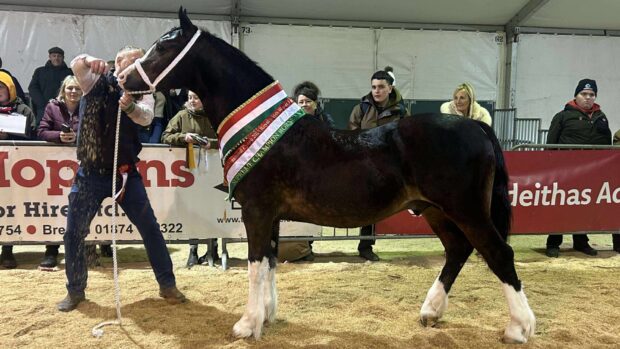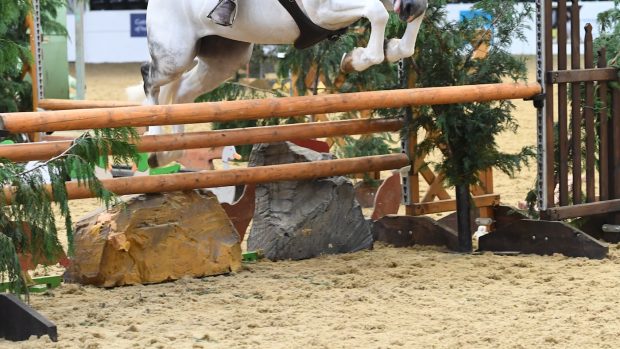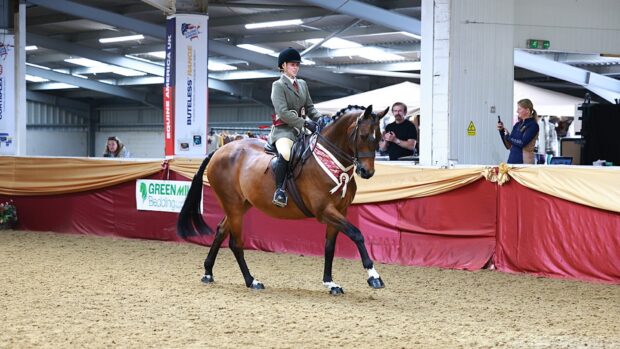Expert advice on starting a young Show Hunter Pony’s education in preparation for the show ring
Q: I have just bought a 14hh five-year-old part-bred Welsh mare who was backed last year and has been turned away since. I have seen video of her working under saddle last year, but I’m not sure what’s the best way of bringing her back into work.
A good doer, I think she has potential as a SHP. I am a fairly experienced rider and would like to do the work myself, I just need some advice on how to start.
Patricia Hardcastle answers: Assuming that you are starting her now, it is good that she is carrying sufficient weight. It is easier to turn fat into muscle, than add weight and muscle at the same time.
Most part-bred Welsh ponies have a good temperament and decent amount of bone combined with stamina and energy. Taking into consideration that young animals expend more energy and she may still have some growing to do, careful feeding and exercise is the key.
Too much work on a young pony with a high metabolic rate will result in her becoming thin and nervous. Consider carefully what you feed – provide sufficient energy through fibre rather than starch-based feeds.
If you want the pony to do Show Hunter Pony classes, she will need to be in good condition with topline, tummy and muscle tone, but still be “hunting fit” and sane if you want to do well and this is a tall order.
Work under saddle
Get her mouthed with a rubber snaffle and walk her out in hand in a bridle to start her off – rush into work and you’ll end up with splints. Hill walking is excellent exercise for her and you!
Add the saddle with a numnah underneath so she doesn’t become cold backed. After a while add side reins loosely. Little and often is the key – too tight side reins will make her stiff through her body and hard in her mouth.
Time and effort are required to get a pony fit, but bringing a pony back into work can be more rewarding than starting a pony from scratch as they quickly remember. However, it is very important not to rush her at this stage. Always make sure that you end on a good note and praise her when she does things right.
Correctly fitting tack is of paramount importance, as incorrectly fitting tack can do untold damage.
Make sure you have knowledgeable people helping when you sit on her the first few times. Always use a mounting block, no matter how light you are, to prevent damaging young back muscles. Only walk for the first few days so she can get used to the feel of carrying a person again.
Gradually introduce trot as she is ready but do not rush her progress. If she shows any signs of not coping then return to easier tasks until she is ready.
Give her time to adjust to every new task you set and make sure one thing is establish before moving on to the next. Do not let her become overtired by too much work or bored by constant repetition.
Work with trotting poles and small fences when she’s ready will provide yourpony with an interesting change of work and help make her a better all-round ride.
Preparing for parties
- Get your pony used to travelling before the day of your first show
- Practise plaiting/pulling your pony’s mane/tail before the show
- Get her used to noise, radios, bunting, umbrellas, etc
- Make sure your pony is used to being bathed
- Practise with rosettes, floppy hats and long dresses
- Teach her to happily walk away from other ponies so she doesn’t nap when leaving the line up
- Wear a green ribbon in her tail at her first show – this depicts a novice and will hopefully prevent people from riding too close
- On the day don’t expect too much and remember she will be tired too.
- Ask other experienced riders to ride your mare occasionally so she is not surprised if the judge asks to ride – which happens occasionally
Read more about starting young horses:



